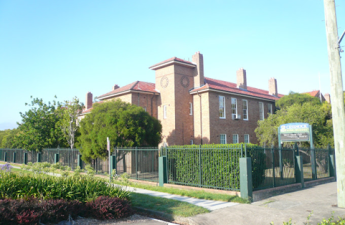We live in extremely uncertain times! Who would have thought that a little over three years ago from the time of writing this article (April 2023,) that in Australia we would be:
- Into the 4th year of a global pandemic that’s claimed millions of lives and caused massive economic impacts on national economies;
- Experiencing extreme trade sanctions imposed by China on some of our major agricultural industries;
- Facing accelerating interests rates and on the brink of a global recession;
- Witnessing the devastation and feeling the heartache from Russia’s invasion of Ukraine, Russia’s threat of using nuclear weapons and their attack causing a global food crisis;
- Seeing the impact of increasingly intense and widespread bushfires and floods across our nation and globally?
Certainly the likelihood of the unseasonal floods and fires should have been anticipated given the decades long warning from scientists around the globe that the continued burning of fossil fuels is bringing the world to the tipping point of irreversible climate change.
Naturally, the impact of these extreme events not only affects nations but also businesses. This means that organizations and governments need to take urgent action to prepare for how to survive and thrive in different and unprecedented scenarios.
For executives, boards and groups of senior leaders, scenario planning has been a successful tool to position organizations to both anticipate and plan for alternate futures.
While there is no standard approach to scenario planning the one I suggest is outlined in the following steps:
- Futurist/Demographer
Futurists focus on making forecasts and predictions about changes to society, the economy, technology, politics and the environment into the future. Demographers study data to determine causes and consequences in the make-up of human populations. However, given the similarity of their analytical skills and focus areas plus as both professions draw on past and current developments to discern future trends, many demographers are also futurists. Hearing the predictions of a futurist/demographer regarding the potential impact of anticipated changes on your industry/sector provides organizations with a professional basis for long term planning.
. - SWOT Analysis
Based on the presentation of the futurist/demographer, it is advisable that the executive team undertakes a SWOT analysis of their organization to determine its current Strengths, Weaknesses, Opportunities and Threats as it prepares for possible future challenges. Strengths and Weaknesses refer to the current internal dynamics, capacities and resources of the organization while Opportunities and Threats to the external present, emerging and future possibilities.
. - STEEP Analysis
STEEP is an acronym that stands for perceived future Social, Technological, Economic, Environmental and Political developments that would potentially have significant implications for your organization. It is recommended that, in light of the insights from points 1 and 2 above, the executive appoint a planning group to undertake a STEEP analysis, as follows:
* Social refers to the demographic, values, spiritual, lifestyle, education, recreational, consumer behaviour and other cultural trends that could potentially impact your organization.
* Technological factors such as potential developments and innovations re energy, media, communication, new technologies, transport, construction, research and development, production, product lifecycles and automation could potentially transform the way a business might function efficiently and successfully in the foreseeable future.
* Economic trends are those factors which impact an organization’s capacity to purchase raw materials and provide goods and/or services into the future as well as consumers’ purchasing capacity and preferences. Potentially, they could include, international trade agreements, interest rates, taxation, stock exchange values, currency fluctuations, employment rate changes and market competition.
* Environmental considerations, driven by a strong social and political concern around human caused climate change, are assuming a higher priority for many firms. As ways of minimizing their carbon footprint, organizations are addressing issues like reducing pollution, recycling, waste disposal, water management, product packaging, environmental regulations and green energy sources. These concerns are specifically impacting the farming, hospitality, automotive, tourism and the insurance sectors as well as those businesses reliant on exports which could be exposed to trade sanctions imposed by countries critical of the exporting nation’s green credentials.
* Political factors are not only limited to those subsidies, regulations and requirements of federal, state and local governments but also the relevant laws of those countries where the organization does business. It also includes consideration of political stability, industrial regulations, trade unions, tax policies, consumer protection and anti-competitive practice laws. Political developments can strongly impact financial markets, trade, environmental and other kinds of laws.
. - Four Possible Scenarios
From Step 3, the STEEP group brainstorms various possible future scenarios within the next 5-10 years. From the list of scenarios choose four – the preferred scenario, worst case and two in between. One of those in between scenarios should be, based on current trends and organizational reality, the most probable scenario if there are no significant organizational changes and the identified trends continue. Why only four? Beyond four it becomes too complex to address all the variable possibilities and dynamics at play. If only three are chosen, human tendency will be to focus on the single middle scenario.
. - Four Project Planning Teams
The executive to appoint project planning teams, each to be chaired by a member of the executive team, for each of the four scenarios. Each of the four teams to:
* Undertake potentially relevant research regarding STEEP trends that could impact their scenario. The results of the SWOT analysis and the futurist/demographer’s presentation together with the findings of the STEEP analysis group in Step 3 need to be communicated to each team.
* Share findings that could also have relevance for any of the other teams.
* Propose SMART (Specific, Measurable, Achievable, Relevant and Time-framed) goals so that the organization can be viable and successful in that scenario.
* Develop broad action plans for each goal.The executive team to establish a realistic time-frame for each planning team and make provision for members to be released from some of their other responsibilities to be able to give focused attention to this assignment. Depending on the relative uncertainties and complexities of each scenario I suggest a time-frame of between 6-12 months. Some scenarios may require more time than others. In addition to their final reports, the executive would probably require regular progress reports, eg. monthly or bi-monthly.
. - Review Mission and Vision
Once each planning team submits its recommendations and those recommendations are approved by the executive, it is time for the executive team to review the organization’s current mission and vision. Questions to consider at this stage are:* How relevant are they in light of each scenario?
* What changes need to be made to the mission and vision in light of each scenario?
* Is any further work required by any of the planning teams or any other part of the organization in light of the approved recommendations?
* Does any of this need to be referred to the governance board for approval?
. - Future Preparation
The executive team to establish a monitoring system to be ready to engage the appropriate scenario strategy once developments indicate that scenario is emerging. As no one can predict the future it is most probable that some adjustments will be required. Nevertheless it is quite likely that at least one of the four scenarios will be approximate. Once that clarity emerges activate the relevant plan, including adopting appropriate mission and vision statements as soon as possible before the scenario eventuates. Be sure to communicate to all staff and other relevant stakeholders once activation commences.



